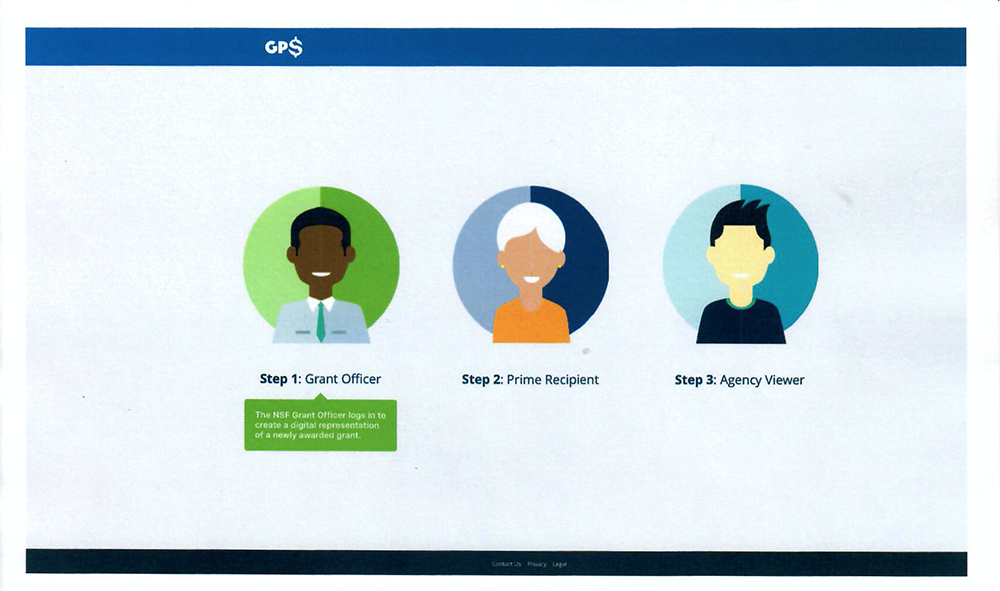

Transformation Stories
Blockchain and the (Possible) Future of Federal Grant Management

Receiving a grant from the federal government is a win. Grants fund innovators at universities, businesses, and non-profits to do research that contribute to the public and the economy. Yet tracking federal grant funding can be complicated and time consuming. With every grant award is an enormous amount of administrative work for grant recipients and the agencies that provide the funding.
Grant awardees must comply with strict federal requirements, which can vary from agency to agency. To further complicate matters, many grants are carried out and administered by both a prime grant recipient as well as sub-recipient, which means prime recipients transfer some of the federal grant funding to sub-recipients to execute the purpose of the grant. As a result, the federal government requires a significant amount of prime and sub-recipient reporting to better understand where grant funding went and what it was used for.
The amount of reporting that accompanies federal grant funding has been an evergreen challenge for the federal government, which oversees thousands of grants to researchers.
What is Blockchain?
Blockchain technology is a shared database that can be synchronized across multiple sites, organizations, or among individuals. Transactions can be recorded and updated in a blockchain, and information relating to the transaction can be shared. Blockchain provides not only up-to-date data, it leaves a history of each transaction from beginning until end. Many industries are exploring the use of blockchain.
Analysts at the Fiscal Service's Office of Financial Innovation and Transformation (FIT) wondered if blockchain might be a solution.
Starting in the summer of 2019, FIT and the National Science Foundation (NSF) launched a proof-of-concept to better understand if blockchain technology might lessen the burden on federal grant recipients as a result of its ability to provide near real-time visibility when assets are transferred over a blockchain network.
The NSF is an independent federal agency that supports research in science, medicine, mathematics, and engineering conducted in universities, schools, businesses, and non-profit organization. With an annual budget of $8.3 billion, the NSF funds research through limited-time grants. It currently awards about 12,000 new grants each year.
Working with the NSF with input from grant recipients, FIT's team created a blockchain-based grant payment prototype. The app's interface is a web-based portal. From the user's point of view, the app looks like a simple online form. An awardee can enter information on each of its grants into the application where it becomes "tokenized," (e.g., creates a digital representation of the grant award). The blockchain token contains descriptive information about the grant, grant recipient, the terms of the grant, and funding associated with that grant. The prime grantee can create internal controls and funding thresholds within the blockchain token that allows for greater control of grant funding. As these blockchain tokens are transferred from a federal agency, to a prime recipient, to a subrecipient, network participants are able to easily view and trace where grant funding is/was at a given time, which ultimately means less reporting for the recipients of grant funding.
How does it work?
As an illustration, FIT created a clickable prototype.

Whenever a transaction occurs — such as a prime grantee "cashes in" a blockchain token to receive a payment — a transaction is recorded. Each transaction can be viewed by all with access to the token, in real time.
The application also allows users to easily generate reports and Users can create a federal financial report or review the status of a grant's payments at any point.
The app reduces the burden of entering information and tracking it and creates real-time transparency for both the awardee and the agency.
The Process
Focusing on user experience from the beginning, the project sought input from NSF, NSF grant recipients (universities), and other stakeholders at each step of developing the app. The approach was to start with a narrow focus, gather feedback, revise the app, and continue, while expanding the field of stakeholders.
Currently, the Department of Housing and Urban Development, Department of Commerce, and Health and Human Services have received a demonstration of the blockchain-based grant payment app and are assessing it, as are additional NSF grant recipients.
At every step, the FIT team asks users: what's working? What isn't? Can this make a government program more transparent, and reduce burden?
FIT will present its feedback and findings at the end of this year. If the team determines that the app shows potential for reducing reporting burden, the next phase of the project may be exploring how the app links to agency financial systems as well as to the banking system.
"We're always looking at the potential value proposition of blockchain," said Craig Fischer of FIT.
To learn more about the Fiscal Service Office of Financial Innovation and Transformation, visit its website at https://www.fiscal.treasury.gov/fit/.
Last modified 01/27/25
